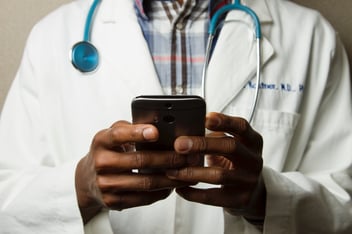Unlike other applications, healthcare apps have extra layers of complexity and variables that make their builds more tedious and detailed but when done right can yield a great user experience. Here's how to design and develop a mobile health app.
The very first action to take is to identify an issue with your current process, one that can be solved or optimized by a Mobile Health Application. This can be any number of different things including better reporting, improved patient experience or streamlining communication through different teams, departments or stakeholders.
Take the time to brainstorm these issues and figure the best ways to solve them. Creating the mobile health app can solve and combine several functions such as: scheduling, contacting staff members and physicians, contacting different departments, insurance verifications, tracking medical history, billing, and more.
Unlike typical business apps, health applications require a more thorough understanding of target audience and users. There are often very different user groups who all must use the same app for several reasons. These include doctors, nurses, and those in the medical field, patients & consumers, health administrators, and finally company executives.
Where many health applications go wrong is the over emphasis of only one user group, leaving the others as afterthoughts who have to find a work-around to meet their needs. Do not assume you know what’s important to users - there is a lot of merit in doing the groundwork of talking to real-life users about what they need to help make their experience better.
Apps that allow each user group to do their part with ease will foster widespread adoption of its use. Apps that frustrate users will cause bottlenecking when some user groups use the application and others refuse to. This can also lead to more frequently needed upgrades and additional work to try and meet the demands users have. Therefore it’s better to put in the work early to develop a truly great app. Bottom line: when researching the target audience make sure to engage all users, add the functionality they want and need, and optimize the user experience from their point of view.
Design of a Mobile Health Application should be simplistic and clear with a very intuitive format for many reasons. It’s important to consider using basic colors and legible fonts to not overwhelm the user, as well as map a concise navigational tool for an easy flow that doesn't cause extra confusion.
Another benefit to a straightforward design is to uncomplicate any need to go back and fix or upgrade coding later on. An easy framework allows for quick access to add personalized modifications or increase the user experience by addressing complaints about the app’s performance.
Keep this advice in mind for when the app needs updating over time to accommodate new functions and a higher level of users. Failing to upgrade an app can result in users dropping off and eventually not using the app. Once lost it will be a lot more difficult to reel them back in once lost.
Because healthcare institutions have access to so much private and sensitive data, security of that data is becoming more and more important. The consumer market does not tolerate a lack of security and expect the applications and businesses who run them to take the utmost precaution in safeguarding personal data.
Though agile development is our philosophy here at Vincit, security cannot be sacrificed for speed. During the build, privacy measures and HIPAA compliance must constantly be verified and addressed by developers.
This step can be the most complex as healthcare applications have multiple user groups to assess. However, the need to balance both the user’s trust in security and all legal compliances will always remain and cannot be shortcuted.
While doing custom mobile app development, there will be a constant cycle of building, testing, and iteration. Have confidence that to organically build a strong healthcare application, this process is necessary.
It is easy for users to know when they’ve had a bad experience. Map out the different ways this Mobile Health App will be utilized and test them with multiple devices and real-life patrons. As noted above, security and compliance must also constantly be tested as new features or adjustments can often require updates for security.
User feedback and analytics are crucial to detecting bugs and problems with the application before its big launch and are important in planning for future upgrades. In the long term, app analytics will be a huge help for developers to understand more about user patterns and application usage.
Unlike other applications, healthcare apps have extra layers of complexity and variables that make their builds more tedious and detailed but when done right can yield a great user experience.
Rushing through the build without adopting the advice outlined above can often create apps users won’t want to use, unsecure apps, or an obsolete system that provides no value.



